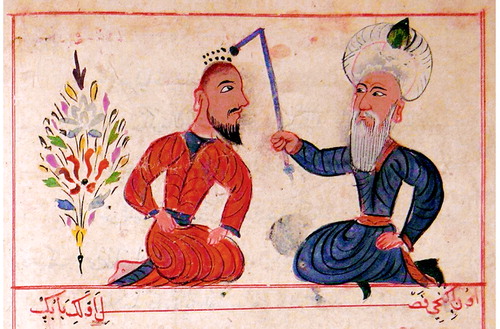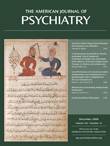Early Color Illustrations of Psychiatric Treatment Methods, as Drawn by Physician Serefeddin Sabuncuoglu (1385–1470)
Serefeddin Sabuncuoglu lived and practiced medicine in Amasya in northern Anatolia in what is now Turkey during the 15th century. He is the author of the first known illustrated surgery textbook, Cerrahiyetü’l Haniyye (Imperial Surgery) (1 , 2) , which survives as only three copies. Besides several original contributions noted by several authors, Sabuncuoglu’s book is unique for the revolutionary illustrations used to show details of the surgical procedures described. During the previous prevailing period of Islamic medicine, all medical texts were written without any illustrations of the human body because the depiction of such figures was prohibited by contemporary thinking.
An unknown aspect of Sabuncuoglu’s book is that it contains a few sections related to psychiatry with the earliest known color illustrations of the field, drawn by the physician himself. One section is on the cauterization of “ mâl-i hulyâ ,” which refers to a variety of neurotic disorders, and the other is about “unutsaguluk,” which means forgetfulness. Sabuncuoglu recommended a stepwise approach in treating both disorders: the use of herbal medicine, then the application of warm oil derived from sheep’s tail fat to the vertex area, and finally, if all efforts failed, cauterization with heat at certain points, with caution against the risk of harming the skin.

Figure 1. Illustration of treatment for “Mâl-i Hulyâ” or cauterization for certain neurotic disorders.
It is apparent that Sabuncuoglu did not practice as a surgeon but as a general physician capable of treating all kinds of medical-surgical conditions, including psychiatric ones. In the following centuries, Amasya Hospital evolved from a general hospital into one providing services only to mentally ill people and remained so for a long time.
Along with his pioneering work, Sabuncuoglu deserves attention and recognition for his professional qualities as a modest researcher, a fine clinician, and a devoted medical educator with high ethical standards. No doubt his advice to colleagues is still valid today, regardless of their specialty: “Keep your compassion separate from your fame and ambition” ( 2 , vol. 1, p. 66).
1. Sabuncuoglu S: Cerrahiyetü’l Haniyye: Manuscript number 79. Istanbul, Fatih Millet Library, Ali Emiri Section, 15th centuryGoogle Scholar
2. Uzel I: Cerrahiyetü’l Haniyye. Ankara, Turkey, Türk Tarih Kurumu Yayinlari, 1992 (Turkish)Google Scholar



